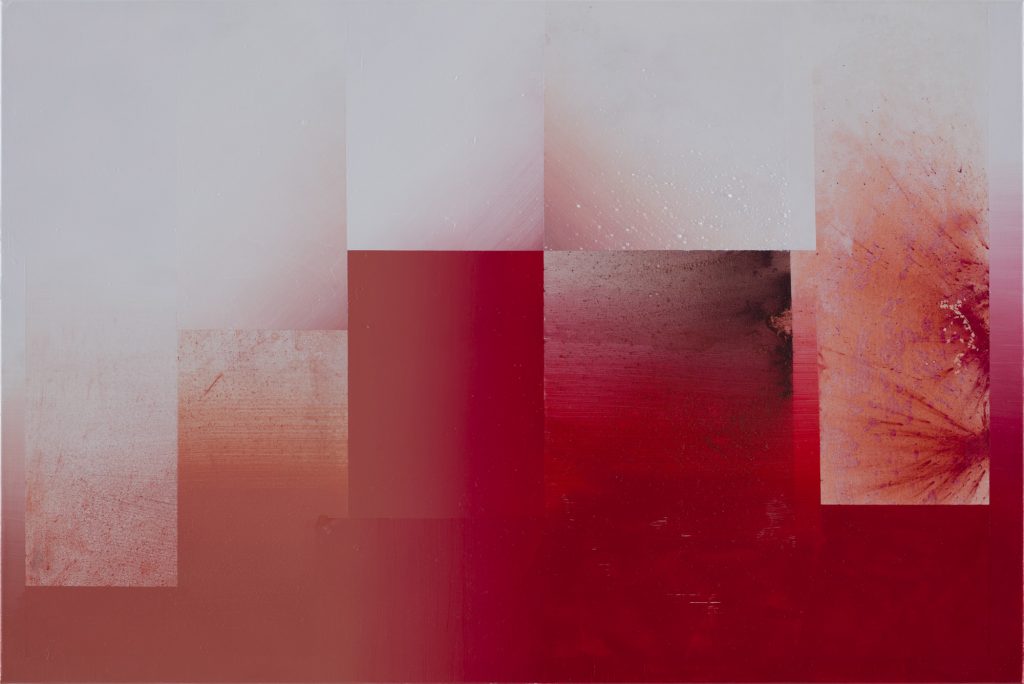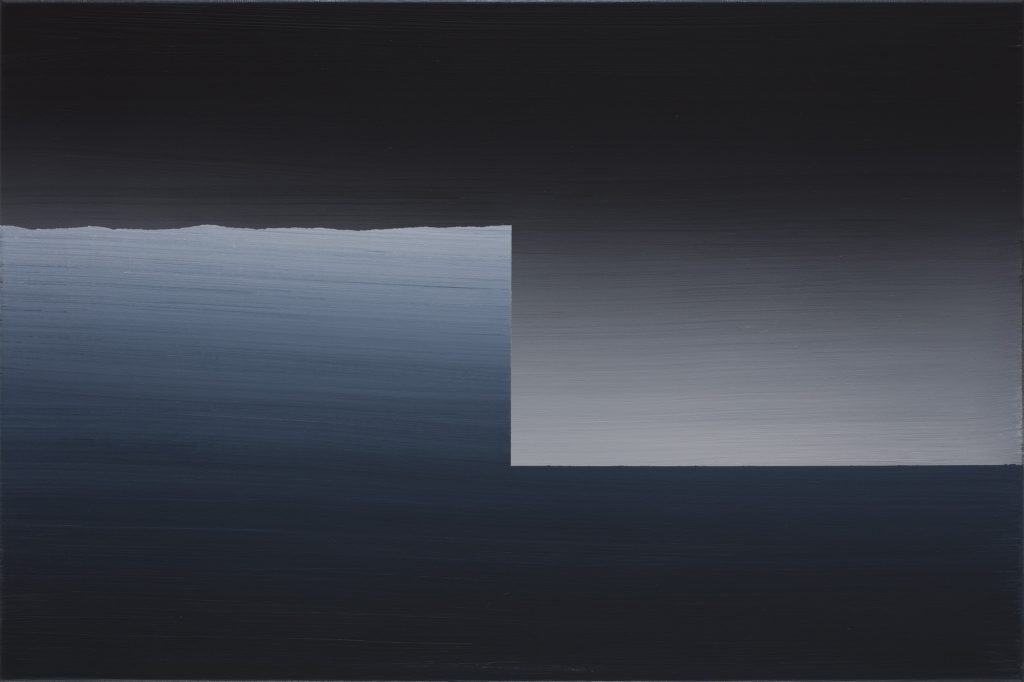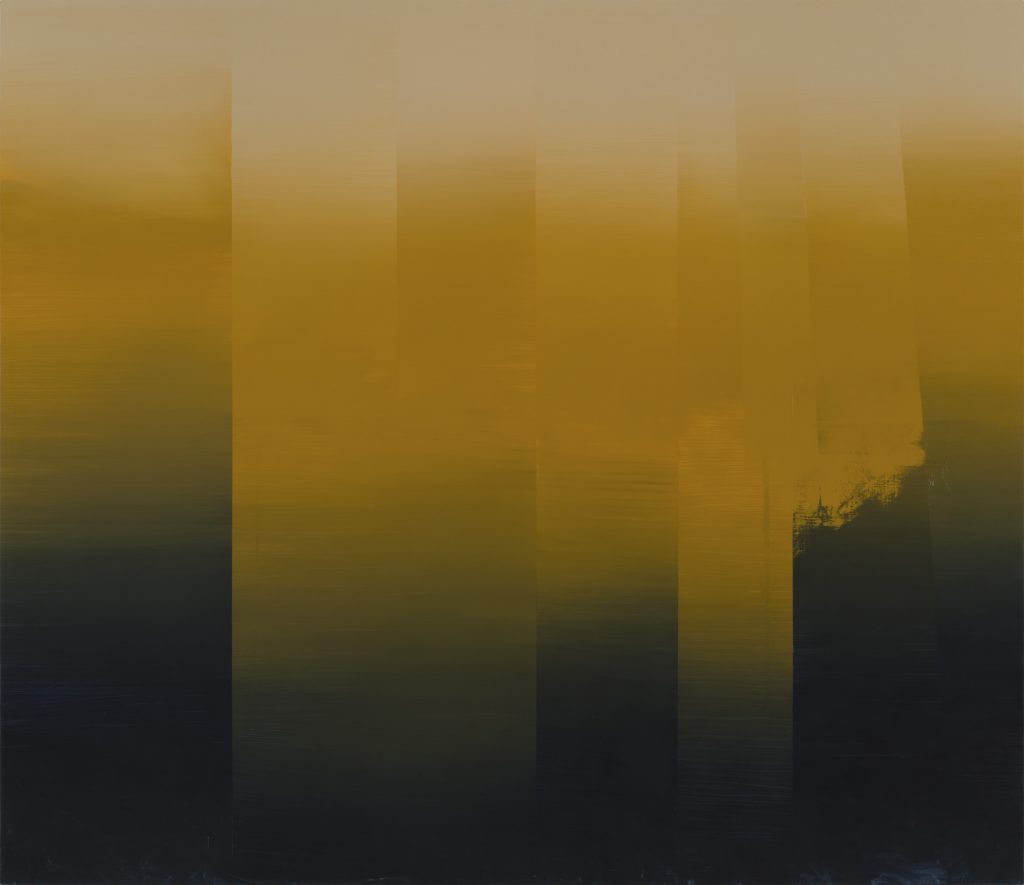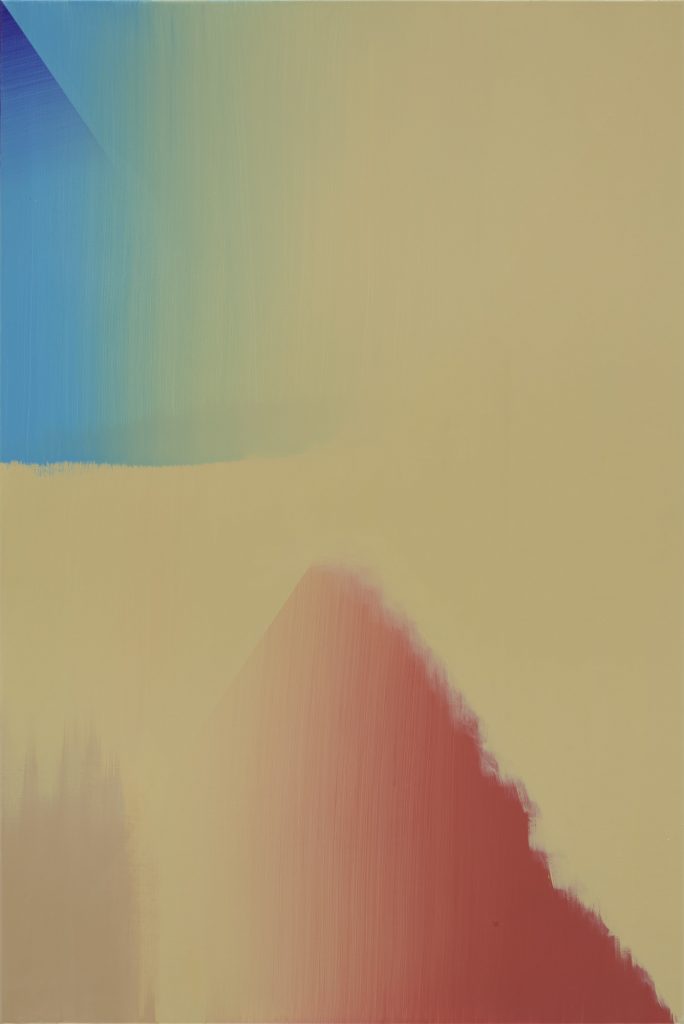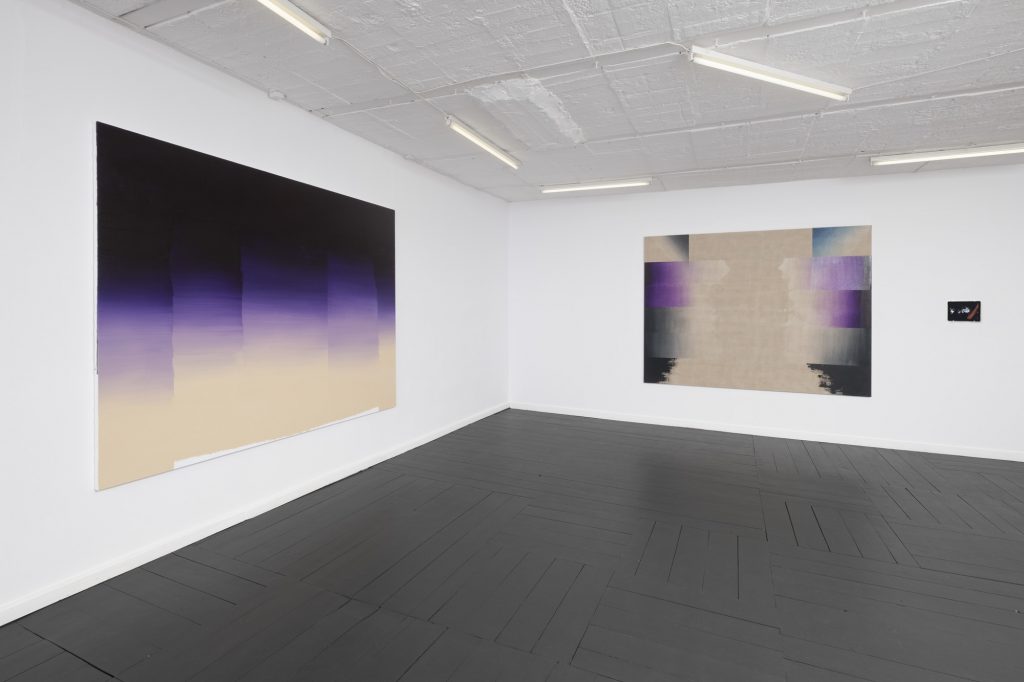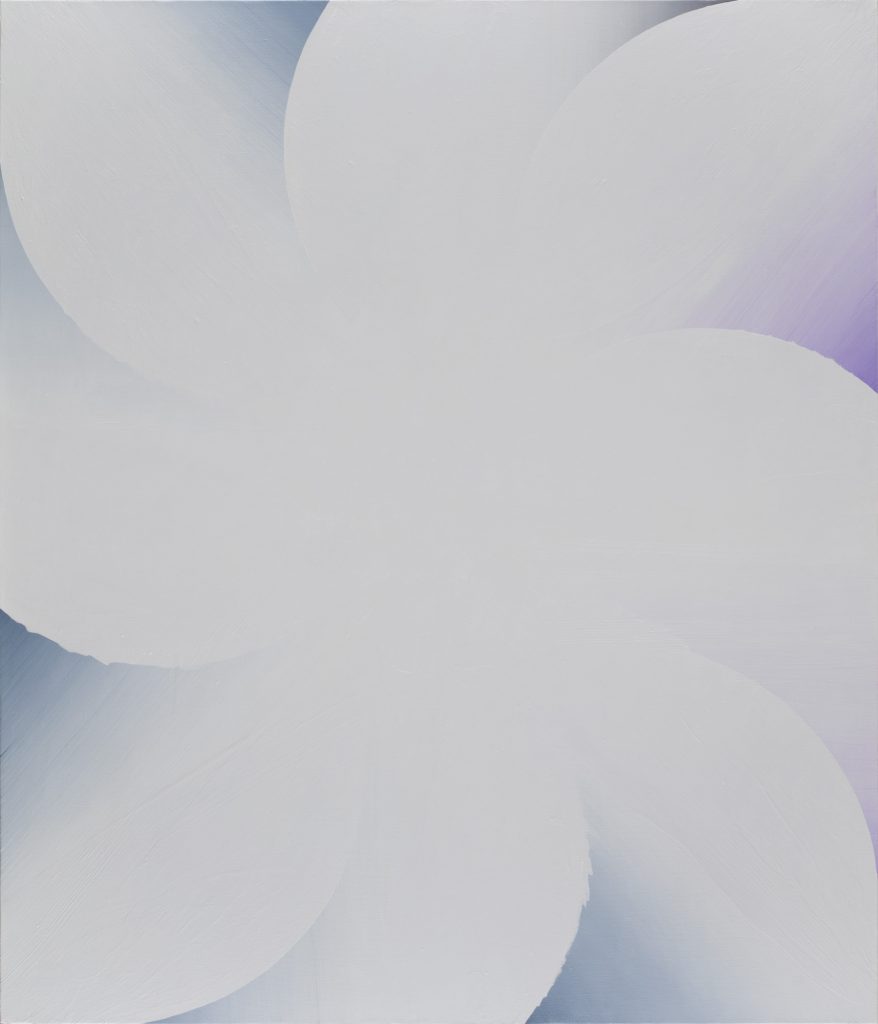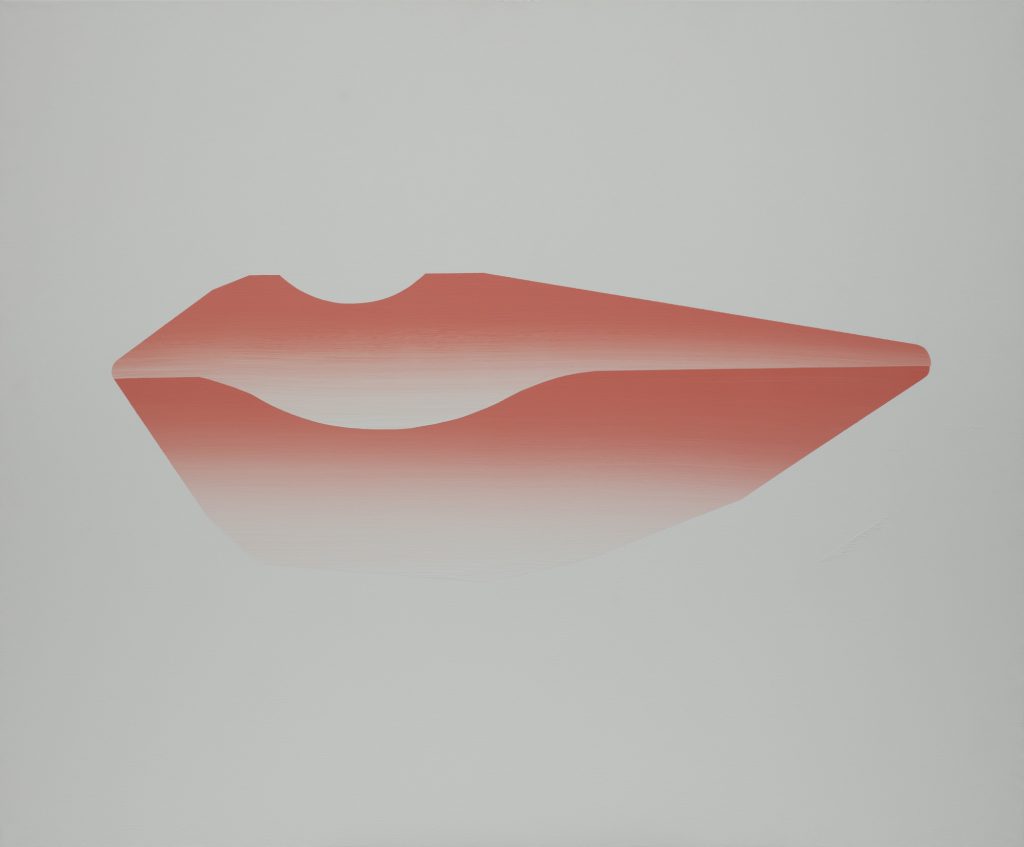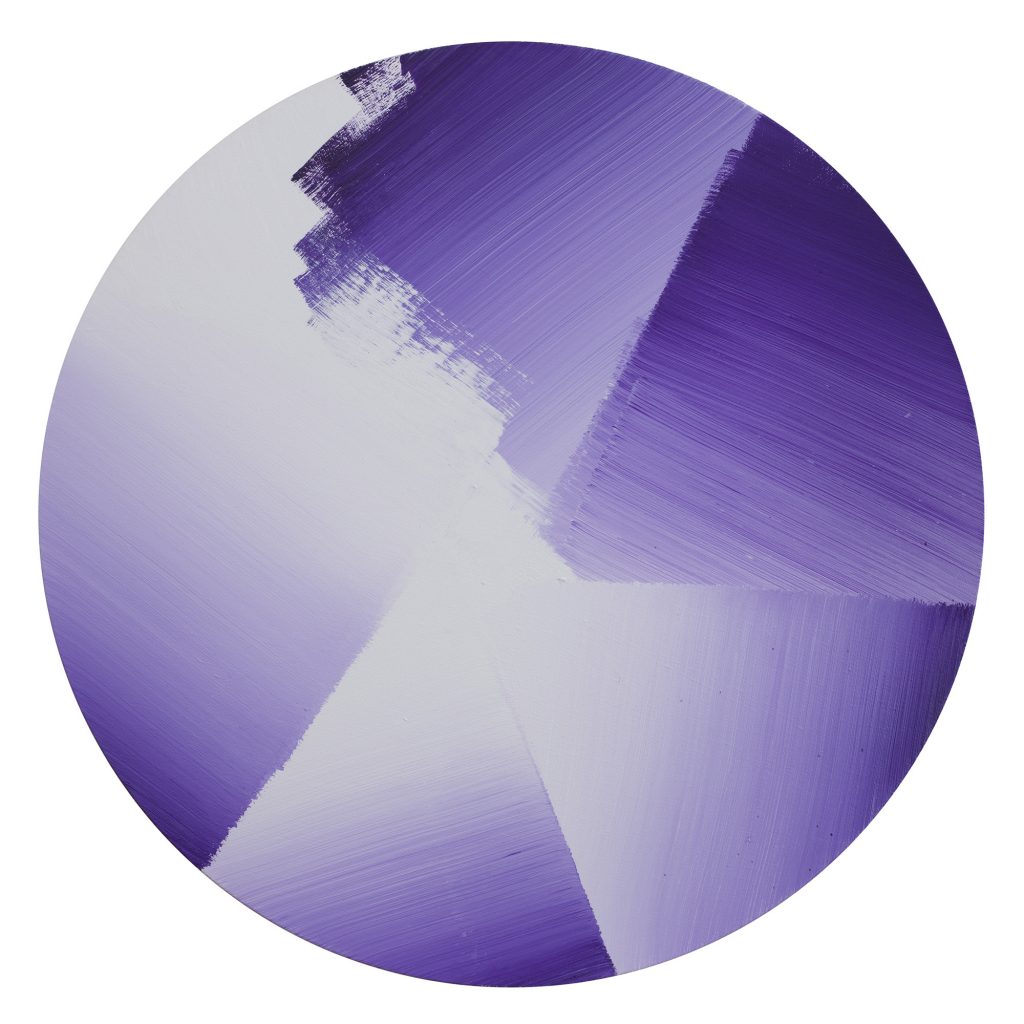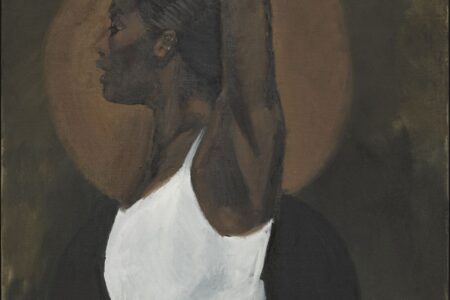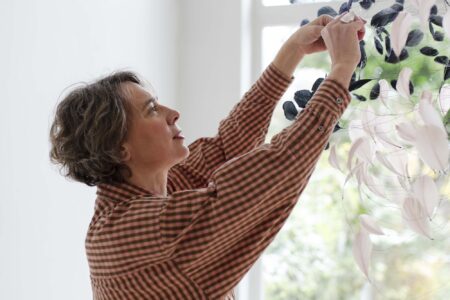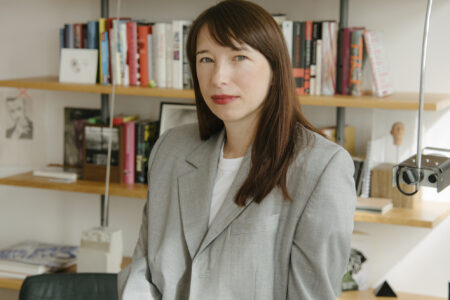Agata Bogacka: Virtuoso of The Wide Brushstrokes
Polish artist Agata Bogacka creates paintings through accumulated layers of paint and blank canvas, opening up a window for contemplation and imaginative inner landscapes.
After graduating from the Academy of Fine Arts in Warsaw in 2001, Polish artist Agata Bogacka quickly became known for her highly stylized, synthetic, figurative paintings – “a painterly diary of mental states” in which she noted down emotions and feelings she had for her near and dear ones. With time, her paintings evolved and direct references to reality or fragments of reality became increasingly abstract. The recent works are in the vein of geometric painting, where shapes are in opposition or dominate each other. The works are made of accumulated layers of paint and blank canvas opening up a window for contemplation and imaginative inner landscapes. Soft tonalities, ghost-like images, light effects and broad brushstrokes guide us from the horizon to the skyline. As the titles of Bogacka’s works suggest – Relationship, Promises, Wishes, Expectations, Divided View, Awakening, Equality Dream, Roots – her paintings may refer to the intimate, complex bounds that exist between people, but these relations should be understood more broadly, as including other modes of coexistence: a relationship towards space, political views, or the world. Her recent exhibition “Demonstration of Pictures” at Pola Magnetyczne gallery in Warsaw revealed a new cycle of compositions giving form to existential acts and facts. The title of the show refers to a painting by Henryk Streng (later Marek Włodarski), which was created in 1933. In Agata’s large canvases and videos, the artist manifests the opaque nature of the world we find ourselves in today: dangerous radicalisation of political discourse, growing polarisation and antagonization of social groups on religious or moral grounds in the times of the economic and epidemiological crisis of the early 2020s.
TLmag: Your artworks, which are often about human relationships, are visually stylized and meditative. They stay abstract and feel deeply connected to a geology of being. What is really precious to you?
Agata Bogacka: I have heard this feedback many times from viewers, that my paintings seduce them despite also giving them a feeling of discomfort. I build my canvas that way to reach dissonance, imperfection and illusion. I am using those three qualities in composition and textures. Every brush stroke makes my paintings closer to life. Reflecting life as it is.
TLmag: You use geometric shapes that are intertwined or opposed to each other. Do they reveal a synthesis of mental states of mind? A kind of catharsis? Why have you chosen abstraction rather than figuration?
AB: I was using figuration in the early 2000s when I decided to stop with it in 2007. I wanted to go further. I started to play around with different techniques to find my new language. I was balancing between abstraction, processed figuration and conceptual paintings. That was a lot of fascinating play for me to match technique to different shapes, including some figuration. Through these studies and process exploration, I wanted to reject all what was not necessary. And figuration in my opinion was too absorbing for the viewer, and was missing the point. As I was already using a gradient, it became clear to me, two or three years ago, how to make the technique the form itself. It is all the game of my art: I set boundaries or eliminate them. When I paint gradients, it is in fact removing the boundaries, it is a soft transition. I then use a sharp finishing of the layer to set up the boundaries again. And it shows the basis of every relationship, every coexistence. I used to say that I paint pure situation.
TLmag: Portrait Composition, Opposition, Negotiations, Dependency, Relationships, Promises, View, Divided Views, Head in Clouds, are titles for your paintings that refer to the inner soul and attitudes of human beings. How do you make them coexist with each other?
AB: It is all about relationships. The configuration of layers reflects the way of our coexistence. I change the titles depending on how the layers react, how they impact on each other. The character of brushstrokes matter as well. The title of Promises, for example: promises are the parts which have a very strong beginning and then start to disappear, never arriving to the end. Often one comes after another and so on. This applies to both the paint and the situation at the same time.
TLmag: You are interested in pentimento. In your artistic process, are you also playing with this underlayer as a trace which can be seen as an imperfection or a true addition to the canvas? Is it meant to reveal fragments of our inner body and emotions?
AB: Pentimento is the exact way I work. Originally it referred to a changing composition, (painter’s changing mind) while working, with the previous version casting some visible traces on the finished painting. For me it shows the greatest value of painting itself: it is the process and you are able to see it. In my case pentimento is my whole way of thinking. I am starting to paint after very preliminary plan and then I want to react every day to the painting at my studio. It takes weeks, months or years to finish one painting. I am like a go-between of reality and the final image. I want to react, not to predict. So, any external factor can affect the appearance of the picture, from everyday life to political situation.
TLmag: Have you concealed social messages in your recent paintings?
AB: I borrowed the title of my last exhibition, “Demonstration of Pictures”, from the painting by Wlodarski (formerly Streng) from 1933 when fascism came to power. I compare it to the present time, especially to the current political situation in Poland. On the other side, it refers to the power of images and to painting as a revolutionary medium. Behind my paintings there are specific life issues. I extract the abstract, the essence from them, in order to reach the heart of the matter.
